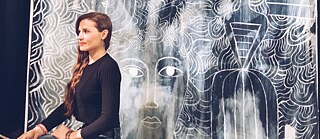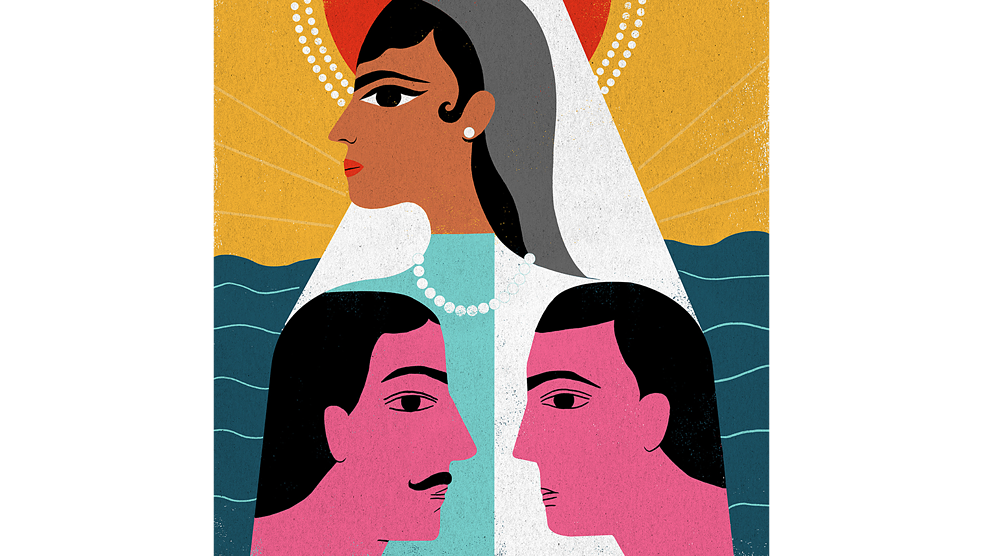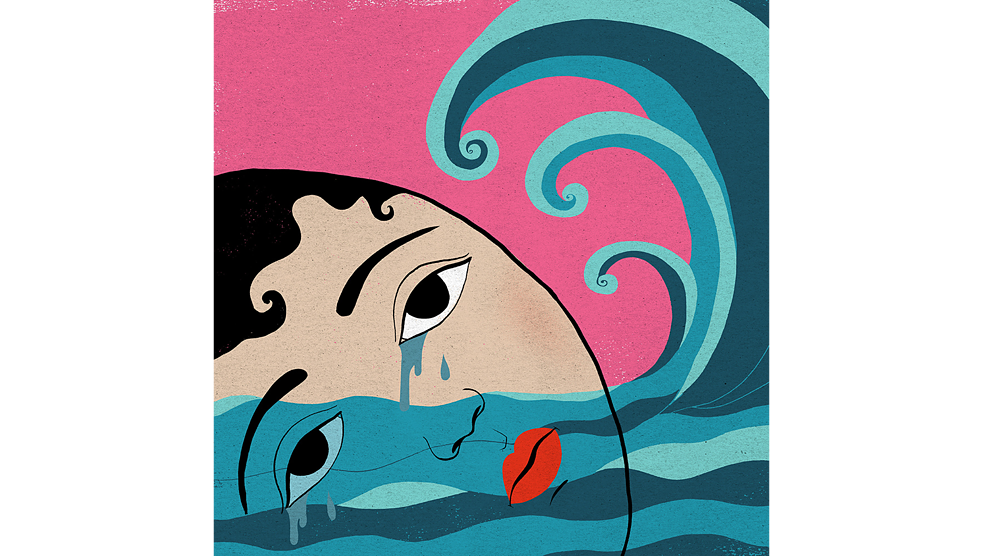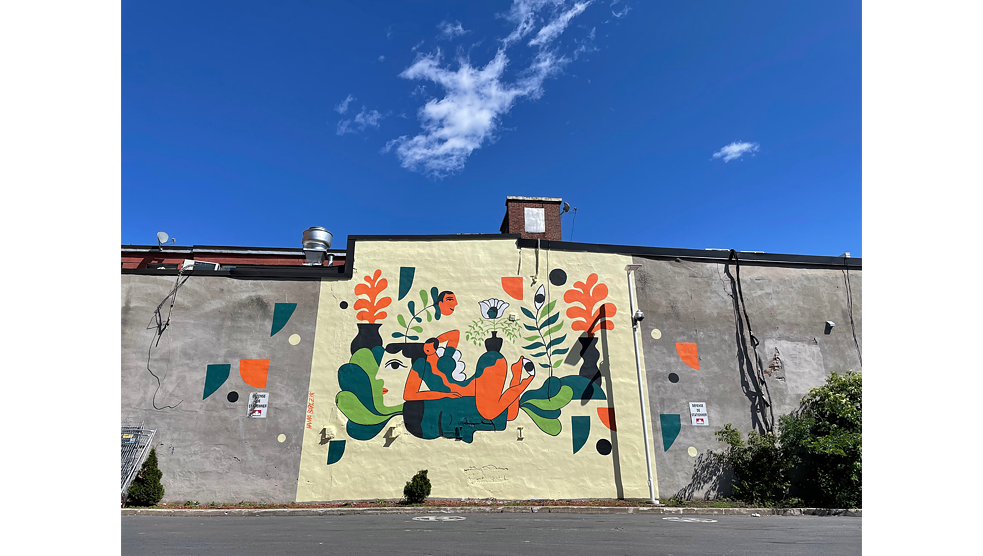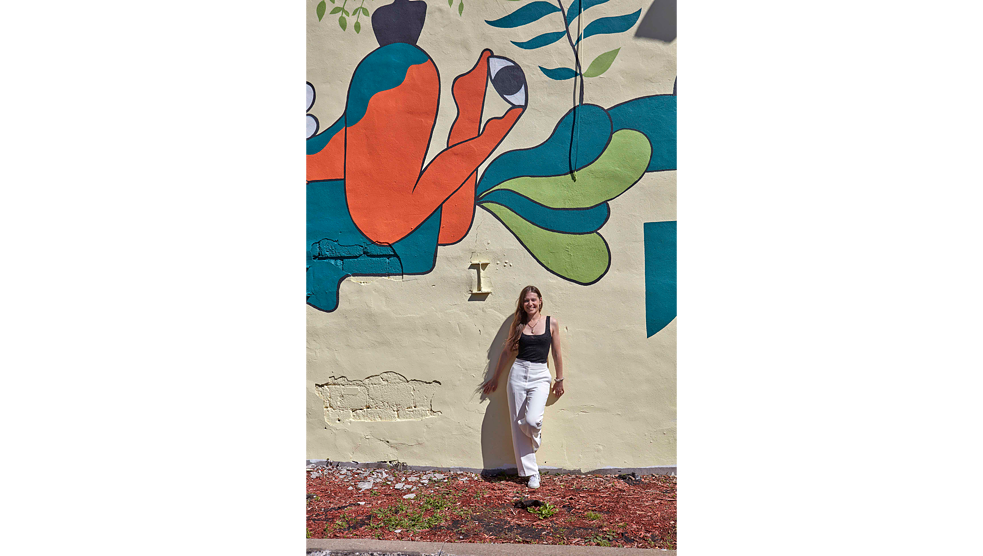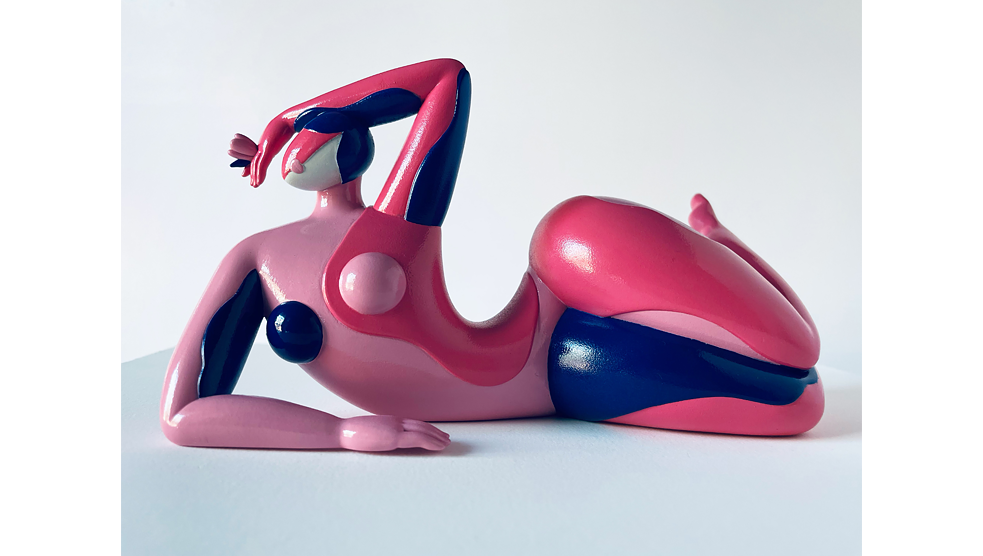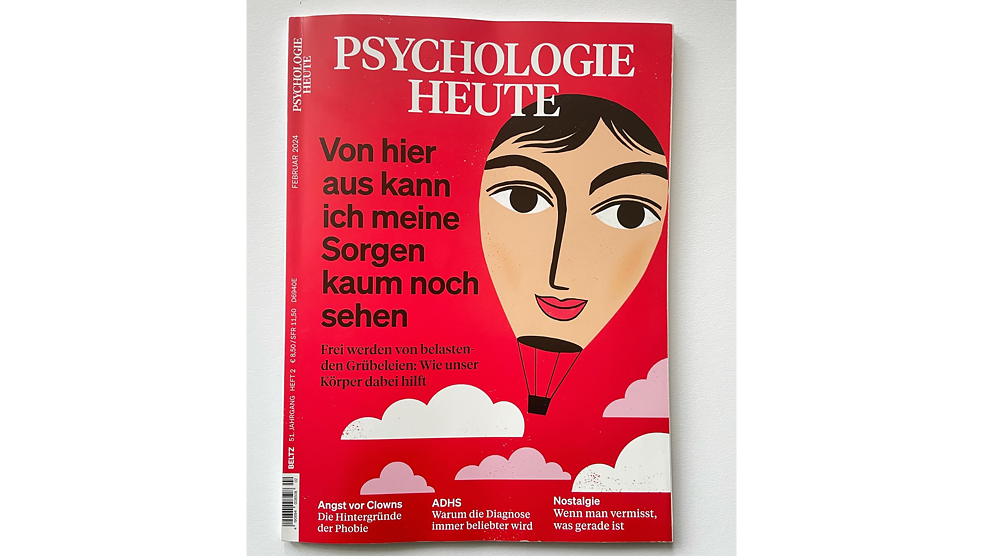Born in Germany and emigrated to Canada with her mother and twin sister at the age of 12 after her parents separated, Hanna Barczyk has developed into an internationally recognized artist – a life story full of fascinating details.
The artist with Hungarian roots was influenced by art from an early age: Her father guided her through baroque churches and castles in southern Germany, while her mother inspired her with Hungarian folk art and vases. These influences led her to study at the Ontario College of Art & Design University (OCAD) in Toronto. She then began her successful journey as an illustrator, which led her to work with The New York Times and many other partners. We had the opportunity to interview Hanna Barczyk about her extraordinary life story and her artistic work.Leaving behind most of your family—your older sister, brother, father, grandparents, everyone—and starting a new life at 12 with your mother and her new partner must have been incredibly challenging. Do you think a different age would have made the transition easier?
Hanna Barcyk: Yes, definitely. 12 was a difficult age to make such a big change. A little before or a bit after might have been easier. But, yeah, we moved in 1996. High school was tough, but university was different. I got into the OCAD, and that's when I really started enjoying my time in Canada.
So, you weren't happy with your situation at first. When did art become a significant part of your life?
Art was always around me. My father, a historian, showed us baroque churches, monasteries, and castles in South Germany, where I was born and raised. My mother had Hungarian vases and embroidered folk art, so I was always inspired. Even around our city we had great museums/ a lot of art. Other great museums in Munich and Stuttgart, which introduced me to German art at an early age, were not far away. By 18 or 19, I knew I wanted to be an artist.
Did you ever worry about making a living through art?
Initially, I had a romantic idea of being an artist. Then I got into OCAD for drawing and painting, but then I discovered illustration there. Seeing this kind of art in the hallways, I learned it was illustration for magazines. That’s when I switched my major to illustration, aiming to make a living from it.
Do you remember your first significant job?
My first major job was actually with The New York Times. That felt like my initiation into being a professional illustrator. I had worked with smaller magazines, but this opened many doors and was a big milestone. After that, it was like a chain reaction: If you say you work for the New York Times, you´re more likely to get the next job.
Have you continued with other forms of art, like painting and sculpture?
Yes, I do a variety of work including murals. Editorial illustration allows me to connect with people through universal themes like climate crisis, human rights, and diversity. It’s important to express my voice and be part of societal conversations through my art. With editorial illustration, I can also find myself in the story. This allows me to express viewpoint visually, so it becomes an easier universal language that everyone understands.
How does street art fit into your work?
Street art is fun because it's public and free. The art has to be adaptable, not too shocking or political. It’s about making a universal statement. Although most of my street art is commissioned, I prefer working with a team and being part of community projects. There are many different projects, which would be difficult to manage alone. The team assistants have an extreme amount of experience of street art and mural painting, and it makes it so much easier to work together.
Can you describe the process of getting a street art commission?
Usually, clients reach out with a wall and some guidelines, like brand colors. I provide sketches, and they choose the one they like. It’s a collaborative process. Street artists will go and paint themselves every day find a wall and they paint. It's not something I personally volunteer to do myself. The preparations take a lot of time and it´s a heavy job. It´s like construction, you have materials, the ladders, the scaffolding, the carrying the paint. I see myself more of a commercial artist that way, so I wait for the work to come in.
What about the piece "Balance and Harmony" that was featured on our #artbits-blog?
That was a collaboration with the Montreal fashion brand Frank and Oak for Mural festival. They only provided brand colors and their logo. That was fun for me, because I had complete freedom to figure out what I want to paint and the subject matter.
When creating, do you start with a theme or a specific character?
I usually start with a theme, writing down words like nature, connection, empathy, and community. Then, I create quick sketches, eliminating and combining elements like a collage until I find the right composition. It's about using visual metaphors and recognizable symbols to communicate a message.
Do you have recurring elements in your work?
Yes, I often use the human figure, especially the female body, in different contexts and situations, often along with leaves and flowers. These elements appear frequently because they are familiar and help convey my messages effectively.
Is there a particular color scheme you prefer?
Ideally, I would work only in black and white. It’s more direct and honest. However, most clients want color, so I adapt to their needs. But black and white helps strip away distractions and communicate more clearly.
Do you see yourself as a storyteller who intentionally leaves parts for the audience to interpret?
Yes, I love that title. It’s about creating a narrative that engages the audience, allowing them to fill in the gaps and connect with the artwork on a personal level.
How did you end up moving from Toronto to Montreal?
Actually, I moved from Toronto to New York first, then to Montreal. When my visa expired, and with my German passport about to expire, I had to stay in Canada to maintain my residency. The border official said: "You haven't been here for five years, and your German passport is expiring. So where do you belong? Where do you want to go?" I decided to try something new and moved to Montreal in 2019. I planned to stay for a year, but I met my partner, got married, and stayed longer.
What’s next for you in terms of public installations?
I have a big project coming up at the new Royalmount mall in Montreal. I’ll be painting a large container for a public installation opening in September 2024. It’s an exciting new venture in my art career.
Thank you for sharing your journey and insights with us.
Thank you. It’s been a pleasure to share my story.
